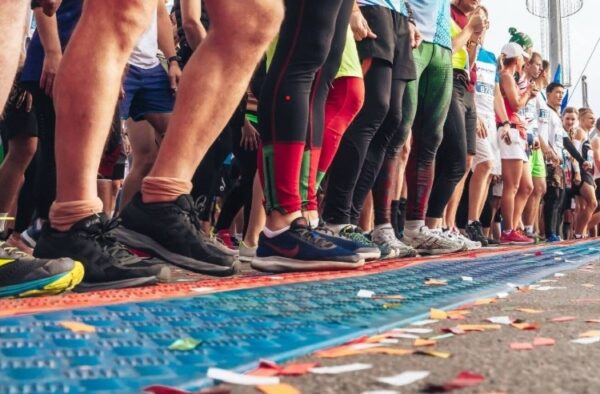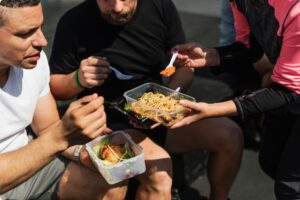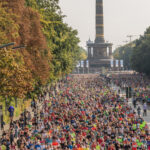I still remember one of my first long training runs where I “hit the wall.” My legs turned to lead, I felt uncomfortable, and I had no idea what went wrong. It wasn’t about mental grit—it was my fuel. The glycogen storage, the body’s high-octane fuel, had run dry. That moment shaped how I trained and ate moving forward. If you’re running your first marathon-or—or your tenth—understanding how glycogen works can mean the difference between a breakthrough and a breakdown. Let’s dive into your body’s real endurance secret.

💡 Why Glycogen Storage Matters More Than You Think
I used to think finishing a marathon was just about running more miles. But the real secret? Glycogen storing. It’s what fuels every stride, especially when the miles start to hurt. This stored carbohydrate energy is in your muscles and liver—ready to power your pace when it matters most.
The trick is, your glycogen stores are limited. If you burn through them too quickly, you hit the wall. But when you train and eat smart, you teach your body to store more and use it wisely—so you can run stronger, longer.
In this post, I’ll share how understanding glycogen has transformed my own marathon journey and how it can boost yours too. Whether you’re chasing a personal best or just trying to finish upright and smiling, this knowledge could be your game-changer.
🧬 What Is Glycogen, Really?
Glycogen is the body’s way of storing carbohydrates for quick energy. It’s made from glucose and stored mainly in your muscles and liver—ready to fuel you when the intensity rises. Think of it as your high-performance tank.
During a marathon, your body relies on glycogen first because it delivers energy fast and efficiently. But the supply is limited. That’s why understanding glycogen storing is key: the better you store and manage it, the longer you’ll stay strong before fatigue kicks in. So, for marathoners, managing these energy stores is vital to avoid the dreaded crash known as “hitting the wall.”
⚡Glycogen vs Fat: The High-Octane vs Diesel Analogy

When you’re pushing the pace, your body chooses glycogen because it gives more ATP (energy units) per oxygen molecule. But once you slow down, it shifts to fat—which is slower but more plentiful.
💡 Here’s where training comes in:
Endurance training teaches your body to burn fat more efficiently at moderate intensities—preserving glycogen for when you need to surge.
🎯 Why Hitting the Wall Hurts So Much
That heavy-legged, soul-draining moment? It’s the switch from glycogen to fat combustion. Your body slows down, because it takes more oxygen to convert fat into usable energy. Every step feels harder, every mile longer.
➡️ This is why fueling your body before the wall hits is key—and why we train for both performance and energy efficiency.
🥑 How Training Builds Fat-Burning Power
Regular marathon training shifts your body’s metabolism. Your body:
-
Produces more fat-burning enzymes
-
Increases glycogen storage
-
Boosts growth hormone for better fat utilization
💬 Personal insight:
I used to rely on energy gels. Now, I’ve trained my body to run up to 90 minutes before needing one—thanks to slow, consistent long runs that improved my fat adaptation.
🕒 Timing Matters: When to Eat for Glycogen Refill
Right after a training, your body is primed to refill its glycogen tanks. Think bananas, raisins, or juice within 15–30 minutes.
Then, within an hour, go for a balanced meal of simple and complex carbs. This timing is gold for recovery.
✅ Carb-rich foods: Oats, pasta, rice, sweet potatoes
✅ Post-run snack idea: Banana with peanut butter and chocolate milk
🍝 Carb Loading: It’s More Than Just Pasta
Yes, the traditional pre-race pasta dinner is fun—but it’s not enough on its own. Start carb-loading 2–3 days before race day to truly top off your glycogen stores.
💬 From my own race routine:
I’m upping my carb intake gradually. By the night before, I’m just keeping those tanks full—not trying to fill them from scratch.
🧪 How Much Glycogen Can You Store?

Untrained runners store around 300g of glycogen. With consistent training and high-carb nutrition, elite runners can store over 800g—that’s more than double the energy!
This translates into more time at race pace, less reliance on external fuel, and reduced risk of bonking.
🔗 Recap: Your Glycogen Game Plan
-
Train fat adaptation with long slow runs
-
Time your carbs: snack post-run, eat balanced meals
-
Start carb-loading early before race day
-
Fuel during runs longer than 90 minutes
🙋♀️ FAQ: Glycogen and Marathon Training
1. What happens if I run out of glycogen during a marathon?
You hit the wall—your pace slows, and you feel drained. This happens because your body switches to fat, which burns slower.
2. How can I avoid hitting the wall in a marathon?
Train your fat-burning system with long runs, eat enough carbs before and during your run, and pace wisely to conserve glycogen.
3. How long does it take to refill glycogen stores?
Glycogen refills within 24–48 hours with proper carbohydrate intake—especially when you eat carbs soon after your workout.
🏁 Final Thoughts: Fuel Smart, Run Strong
Marathon success isn’t just about miles—it’s about mastering your energy. Glycogen is your silent partner, pushing you forward until the final mile. By training wisely, fueling with purpose, and listening to your body’s needs, you’re not just building endurance—you’re building resilience.
Remember, every long run is a chance to teach your body how to conserve, burn, and thrive. Whether it’s your first marathon or your fifth, managing glycogen is the key to crossing that finish line strong—and smiling.
💬 I’d Love to Hear From You
Have you ever “hit the wall” during a run? Or maybe you’ve found a carb-loading strategy that works wonders for you? Drop a comment below and share your experience—Let’s keep cheering each other on, one mile and one story at a time.
🧡 Run far, fuel smart, and don’t forget to celebrate the journey.
Thanks for reading. If you found this helpful, feel free to share it with a fellow runner—or anyone who needs a reminder that the finish line is never as far as it seems.





Thank you for your article on glycogen. It sounds like one of the benefits of long distance running, is the ability to eat lots of pasta and not worry about putting on weight! I can see that you would need lots of calories to fuel your run. Carbohydrate and fat are the main fuel source during exercise.
Hi Carolyn
Thank you for the comment.
Yes. Glycogen is the body’s “High octane fuel” and there are a lot of carbohydrate in pasta.
Be Well
Hi there thanks for the review it as really helpful I must say. In short, muscle glycogen can be said to be the primary fuel source for skeletal muscle tissue during prolonged strenuous exercise, such as training for sports like power lifting, weightlifting, strongman, and competitive fitness. It helps to build up sand strengthen the muscles when energy has been used up.
Hi Philebur
Thank you for the comment.
Glycogen is the base fuel for all of us. In sport we just need more of it, because we
compete with others.
Be Well
helllooo dear, wow what an amazing post you have here, you surely talked like those scientist i watch on TV, LOL, i a really grateful with such an amazing post you have shared with us so far, your site really is full of such an amazing post, i must say i have been saving each of your pages to learn alt from these article, it really has been an interesting content, cant wait to show my fiends, ill surely share your contents on my social media page.
Hi Skuchmane
Thank you for the comment and your compliment.
– Sorry for the late reply. I’m still new in this context.
Be Well